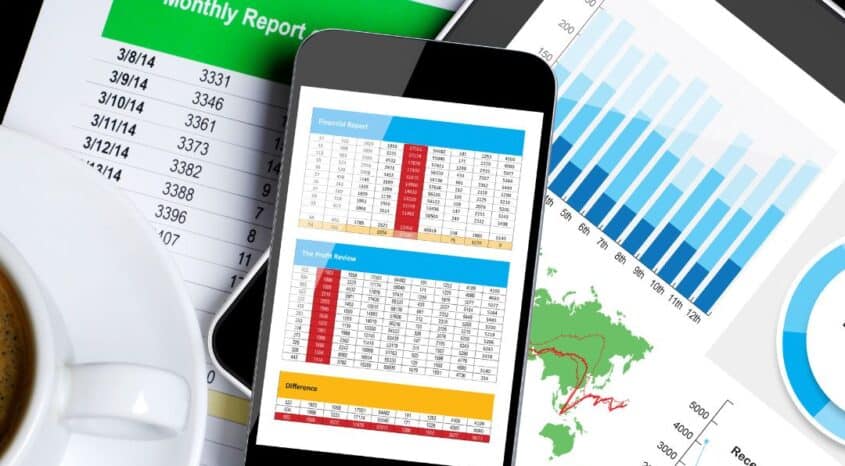When an SME merchant experiences rapid growth its profit margins might go up – but its back office operations often go into meltdown.
Spreadsheets get used to plug gaps between systems; mistakes and delays become commonplace, resulting in poor customer feedback; tedious manual workflows take up the time and energy of team members; and a lack of visibility hampers decision making.
This sudden onset of operational complexity has historically been the trigger which prompts retailers to sign up with a traditional ERP, or Enterprise Resource Management software, in a bid to streamline workflows, optimize data and improve efficiency.
Introducing a new technology system, such as an ERP, into an organization can be a game-changer, helping to boost productivity, reduce costs, support growth and boost the customer experience.
But because implementation is so crucial to the overall success of the system, it’s important to first consider exactly how the system will be implemented – because not all implementation approaches are created equal.
The research is in
New research by leading operating system Brightpearl has revealed widespread and significant issues linked to ERP implementation.
For instance, in the UK, a third (34%) of all UK firms have experienced a major implementation challenge when implementing an ERP in the last 12 months.
It’s a similar story in the US, with four in 10 (38%) firms experiencing a major challenge when implementing an ERP over the last year.
The study, which involved 500 retailers and took place in April 2022, also confirmed that implementing an ERP takes months, and sometimes even years, to complete.
Nearly 60% of respondents completed their implementation in the projected timeline, which is positive, but 36% of projects took longer than estimated to get live – with an average 200-day delay.
So has implementing an ERP has become a time-consuming, frustrating mistake that causes more problems than it solves?
It’s not quite that simple. Despite ERPs being widely considered dated, slow and inflexible, many merchants still see them as essential – and every year a new influx of growing commerce companies hit the turning point where they sign up for an ERP implementation experience.
And although we’ve known for a while that ERP implementation fails in up to 75% of cases, the prevailing popularity of ERPs means they can’t be written off. Instead, we must dig deeper into exactly what’s going wrong – as well as what’s going right – with the implementation of these systems.
What’s going wrong?
Integration issues, data migration challenges and a ‘lack of training or support’ top the list of reasons for ERP implementation failure in the UK, affecting 24%, 20% and 18% of brands respectively.
In the US, a ‘lack of scalability and flexibility’, data migration challenges and major operational disruption are the biggest factors, affecting 25%, 23% and 21% of retailers.
While issues with ERP tech, which is notoriously complex and rigid, are behind many of the challenges, it’s not just the tech that’s to blame.
In the US, for instance, it’s (partly) the humans; 15% of businesses say a ‘lack of expert implementation consultants’ was responsible for a tricky ERP implementation. And in the UK, the businesses themselves were sometimes at fault, with almost one in five (18%) of retailers citing a ‘lack of priority at an internal level’ as the reason their ERP implementation went awry.
The research has also highlighted the issue of spiraling fees.
Brightpearl found that on average ERP projects cost around a third more than predicted. Why are costs soaring? It all comes back to the issues which make it challenging to get set up in the first place. For example, 17% of US brands said their ERP is a ‘poor fit for retail’ and 15% of UK merchants admitted their ERP was inflexible.
ERPs typically lack the in-built functionality and integrations modern brands need to succeed – and while adding them isn’t entirely impossible, it does incur extra fees and time, driving up the cost of implementation significantly.
The post-implementation picture
Unfortunately for some retailers, ERP problems continue even after they have overcome the costs and challenges of implementation.
A quarter (27%) of UK brands face post-implementation data sync issues with sales channels or other platforms and one in five (20%) report ‘endless glitches’. In the US, a quarter of retailers (24%) have to contend with ongoing data delays in their reporting and 13% say they experience broken workflows.
Overall, the data paints a clear picture: ERPs aren’t the cure all many brands assume they will be. And just because a brand reaches a level of growth where it can get an ERP, it doesn’t mean it should.
By their very design, legacy systems have a complex, rigid architecture which makes it expensive and costly to implement – and nearly impossible to quickly adopt new tools and apps (including platforms like Shopify and BigCommerce). Even for the brands that get over an expensive, months-long implementation, further issues – like slow processing or annoying glitches – often follow.
Some brands might be perfectly able to live with this. But modern brands that want the freedom to grow in any direction they choose will need to choose a different path, and the considerations are clear. They’ll need to prioritize tech partners with in-built flexibility, clear retail expertise, and a track record of successful implementation with similar brands of size, scope and sector.
Want to know even more about ERP implementation projects and how and why they go wrong? Grab your free copy of our new report: ‘Implementation Crisis: Are Most Major Tech Adoption Projects Doomed to Fail?’ now.




